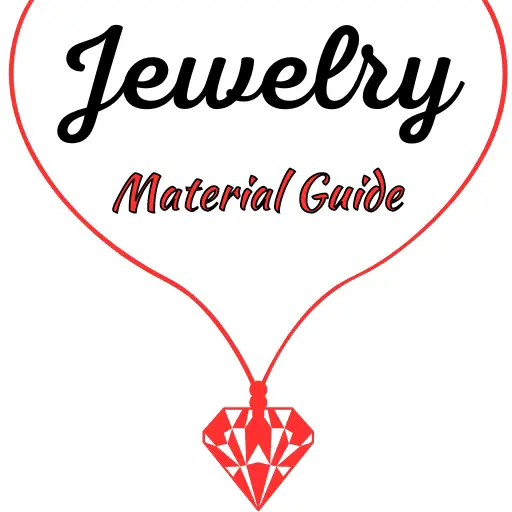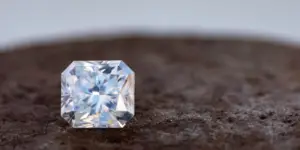Morganite and moissanite are two gemstone names you’ll hear often in the bridal industry, and it’s amazingly easy to confuse the two. They sound so similar and they’re often in the same ring. So let’s figure out what moissanite is, what morganite is, how they differ ad how they work together.
Morganite vs moissanite
Morganite is a type of beryl with a peachy-pink color while moissanite is a white, clear gem that is used as a diamond simulant. Morganite is a natural gemstone while moissanite is always lab grown, but they are within the same price range. Despite this, moissanite is far stronger than morganite and will hold up to daily wear and tear better. There is a significant sparkle difference, as morganite doesn’t sparkle while moissanite sparkles even more than a diamond would.
Both moissanite and morganite are fan favorites in engagement rings, and they are often paired together, and most commonly in rose gold !
What is morganite ?
Morganite is a type of beryl gemstone, in the same family as emerald and aquamarine. Morganite has a peachy-pink color, due to trace amounts of manganese. This soft color appears even softer because morganite tends to have very, very high clarity, just like aquamarine.
Due to its soft peachy pink color and high clarity morganite has become a very loved gemstone for ultrafeminine jewelry, usually set in rose gold and often featuring at least a few diamonds/moissanites/CZ as a halo or accent stones.

Morganite does not sparkle, but it does have flashes of light. Its main attraction is the color and clarity, not the sparkle factor. For this reason you may want to get morganite in brilliant cuts, since some of them can really concentrate the color, as opposed to step cuts. The best cuts for morganite are the oval cut, the radiant, the cushion, and the Portuguese cut. Of course you can gem your morganite in any cut you like, it’s just that these suit their color and clarity best.
What is moissanite ?
Moissanite is the lab-grown version of real, natural moissanite. Natural moissanite is extremely rare and very expensive, and it is much easier to create it in a lab. All moissanite on the market is lab-grown.
This gemstone has incredibly high refractive index (2.69) so it will sparkle a bit more than a diamond that is cut in the exact same way. For this reason and its hardness, moissanite is used almost exclusively as a diamond simulant. It can be worn on its own, as a separate gemstone, and there is a small movement in that direction, wearing moissanite as moissanite, not as fake diamonds.
As it’s a lab-grown gem, you can easily find colored versions too. Most of the time you’ll find moissanite as white, since that is the highest demand. Now let’s compare moissanites and morganites, and see how they differ and whether they can work together.
Read also: Emerald VS Oval Cut Diamonds
Morganite is peachy-pink, moissanites are usually white
Perhaps the first and most obvious difference is color. Morganite is a gemstone known for its specific peachy-pink color, with emphasis on having both colors. Morganite that are mostly pink or mostly peach are not as valued as balanced ones.
Moissanites are almost always white, since that is what most people are looking for. However if you like, you can find colored moissanite and you can even find it in a peachy-pink color, if you want to substitute a morganite. There will be some differences though, and you’ll see them explained below.
For now though, rest assured that if you ever see a ring with a peachy pink gem and a white halo, there’s a high chance that the center is a morganite, and the halo is diamonds or morganite.
Moissanite is stronger, more durable than morganite
There is a significant difference in hardness between morganite and moissanite. Morganite, as a beryl, is still wearable everyday but a bit soft, scoring an 8 on the Mohs scale. This means it will withstand most light hits, but it may chip or crack if not work carefully. And since this is such as high clarity gem, and chip or nick will be immediately visible, just like in aquamarine or most types of quartz.
Moissanite is a far tougher gemstone, scoring a 9.25 on the Mohs scale, just under the diamond’s perfect 10/10. This makes moissanite very resilient, and able to resist hits from anything except another moissanite or a diamond. So for everyday wear we recommend moissanites, since they hold up much, much better.
If you’re interested in morganite for an engagement ring, and you intend to wear it every day (as most people do), then you will have to be mindful of the chores you’ll be doing. In time morganite will accumulate tiny scratches that will dull it. Or, you could swap the morganite for a colored moissanite and have the same look, with a more resilient stone.
Morganite is usually natural, moissanite is lab-grown
If you’re someone who appreciates a gem for its natural, earthy origin then morganite will be a much better option for you. Currently all morganite on the market is natural, not lab-grown, while all moissanite is lab-grown.
Moissanite sparkles far, far more than morganite
Does sparkle factor into your decision ? Then if you’re looking for something that will dazzle moissanite is your friend. It has amazing light performance and will always impress. Morganite simply cannot do the same, as its refractive index (1.6) is lower and so is its luster (vitreous).
A gem’s luster is actually very important, since it’s most useful inside the gem and affects how much of the light is bounced around. The absolute best luster is adamantine, which is what moissanite and diamond have, which makes them essentially mirrors on the inside. Viterous luster, the next best thing, is like glass – clear, but some light escapes through it, so it won’t reflect back as much.
So for this reason, if you want the color of morganite but the sparkle of a moissanite, you may want to ask for a colored moissanite
Moissanite and morganite are very similar in price
The main driving factor behind morganite’s price is its color. Most of the time it’s a very clear gem, but it can be very pale sometimes, or how have an even balance of pink and peach. So the very well balanced and medium-toned morganite will fetch the highest price, around $300 per carat or a bit more. If it’s paler or the color is not balanced, the price will be lower.
What about moissanite ? Most of the time it hovers at just under $500 per carat for Flawless clarity and D color, depending on clarity and color. Of course, the near-colorless range and slightly lower calarity grades will cost less.
Do moissanite and morganite go together ?
Yes, moissanite and morganite jewelry is very popular, and it’s most often set in rose gold. There’s something very dainty and airy about morganite, and moissanite is usually added as a halo or accent stone, further adding to the delicate look. Overall this is a great combination of gems that is also quite affordable, especially since moissanite performs very similarly to a diamond, but for far less cash.

I’m the main author for jewelrymaterialguide.com. I started this site after we did tons of research before our wedding and noticed that there is information about rings, jewelry, and so on that is really hard to find on the internet.






